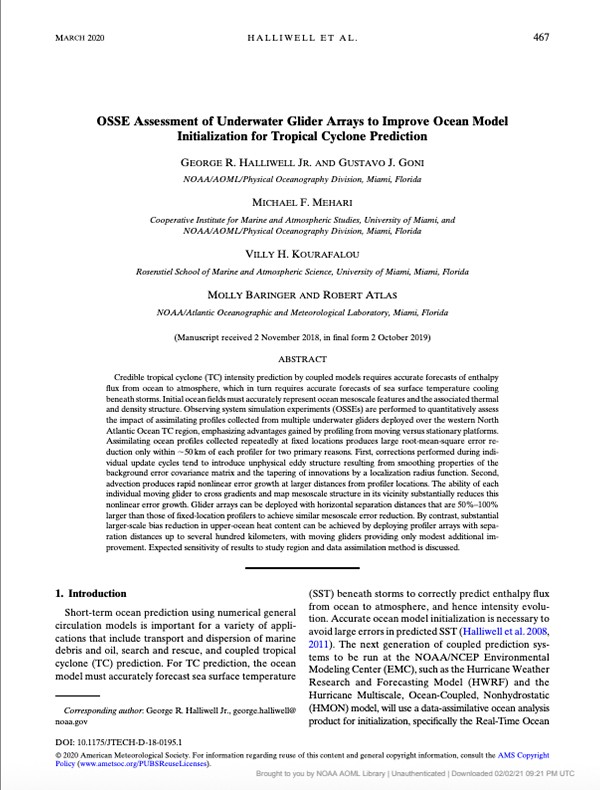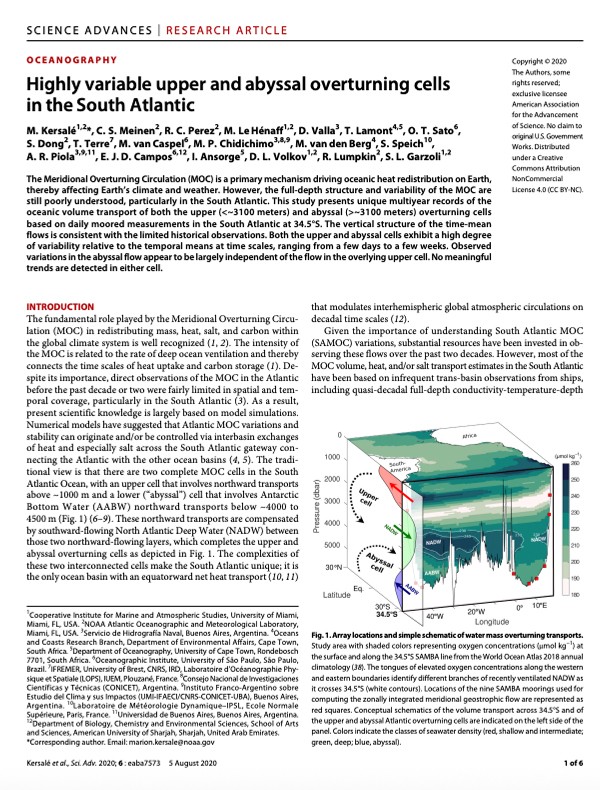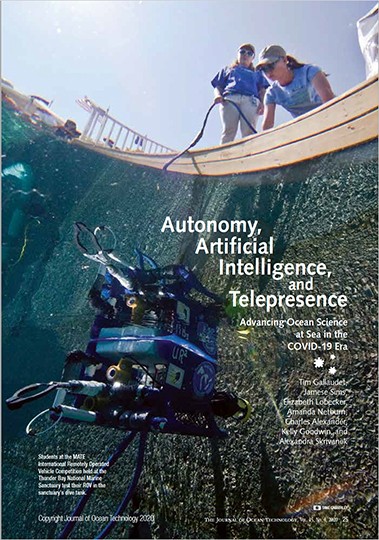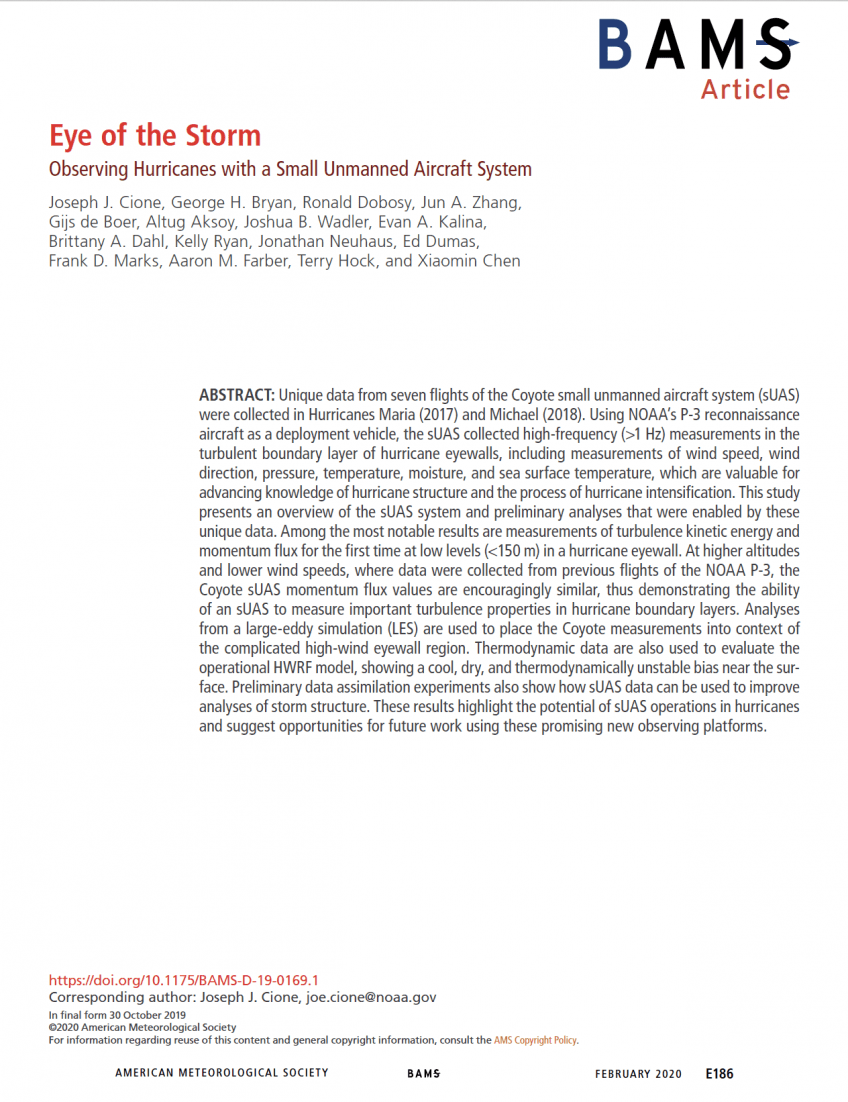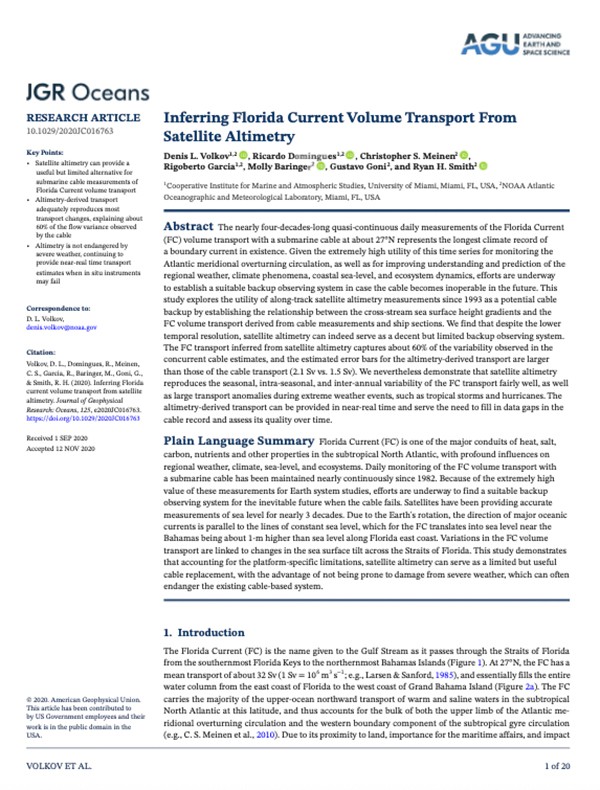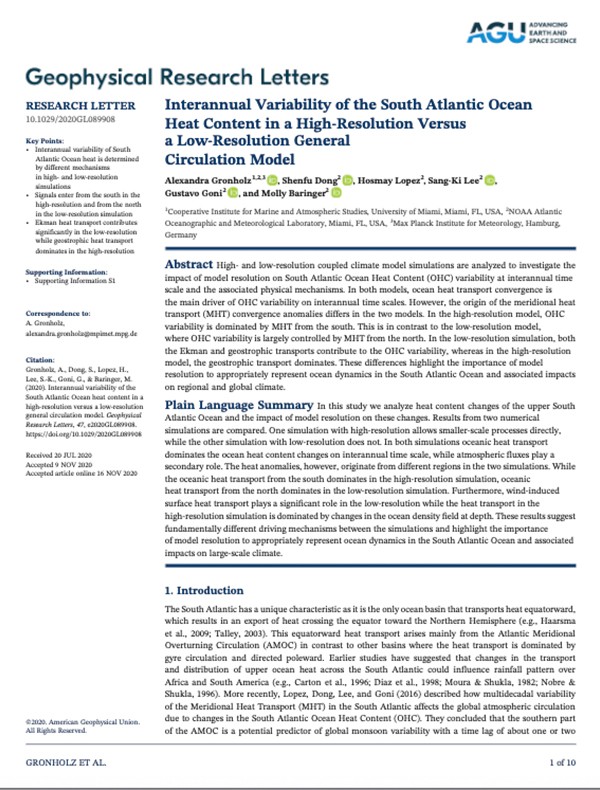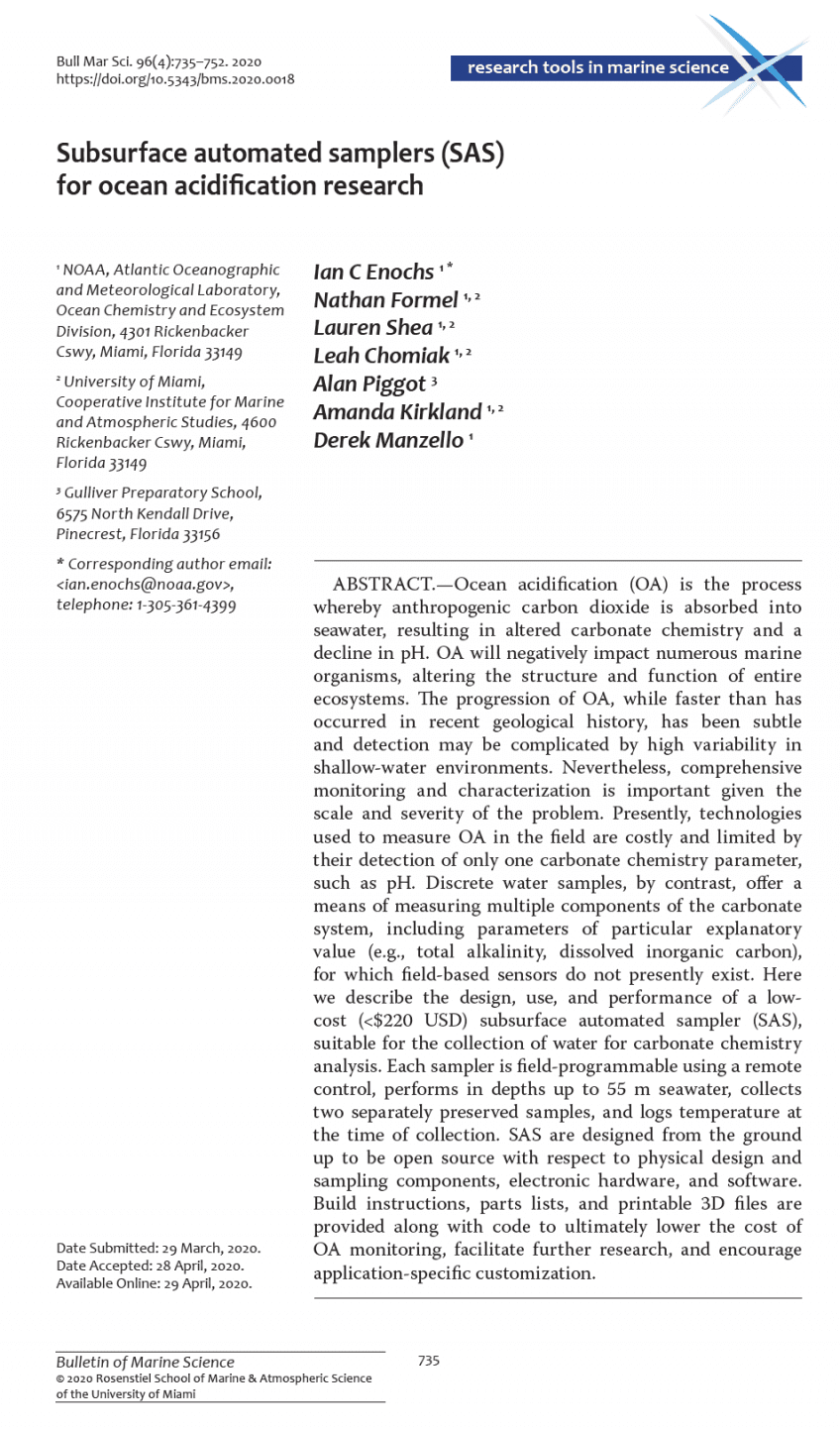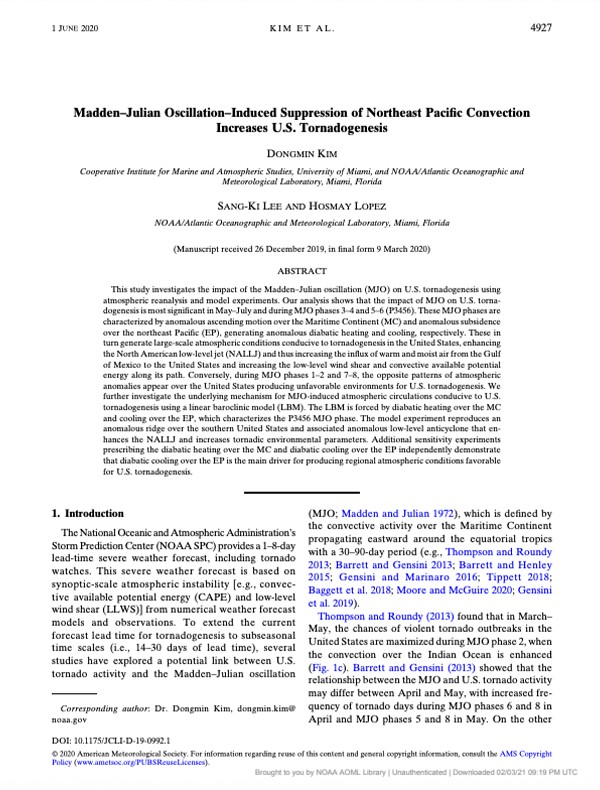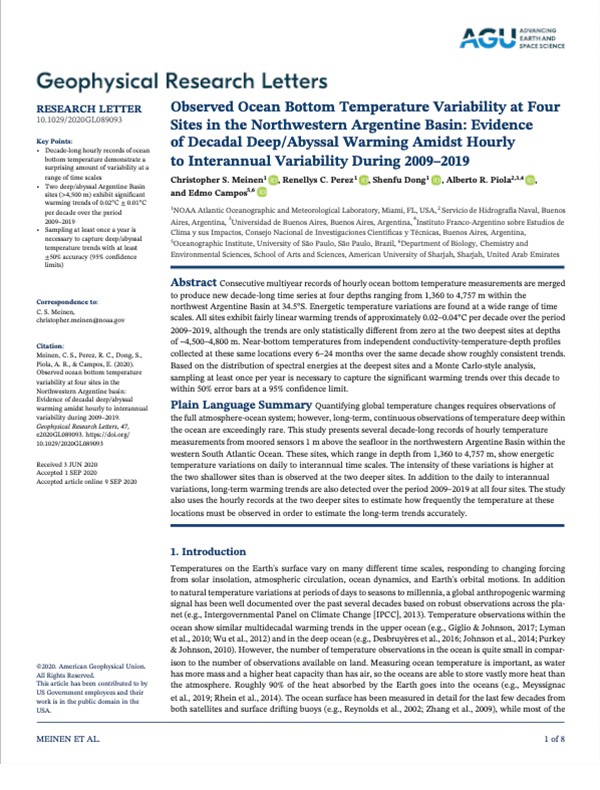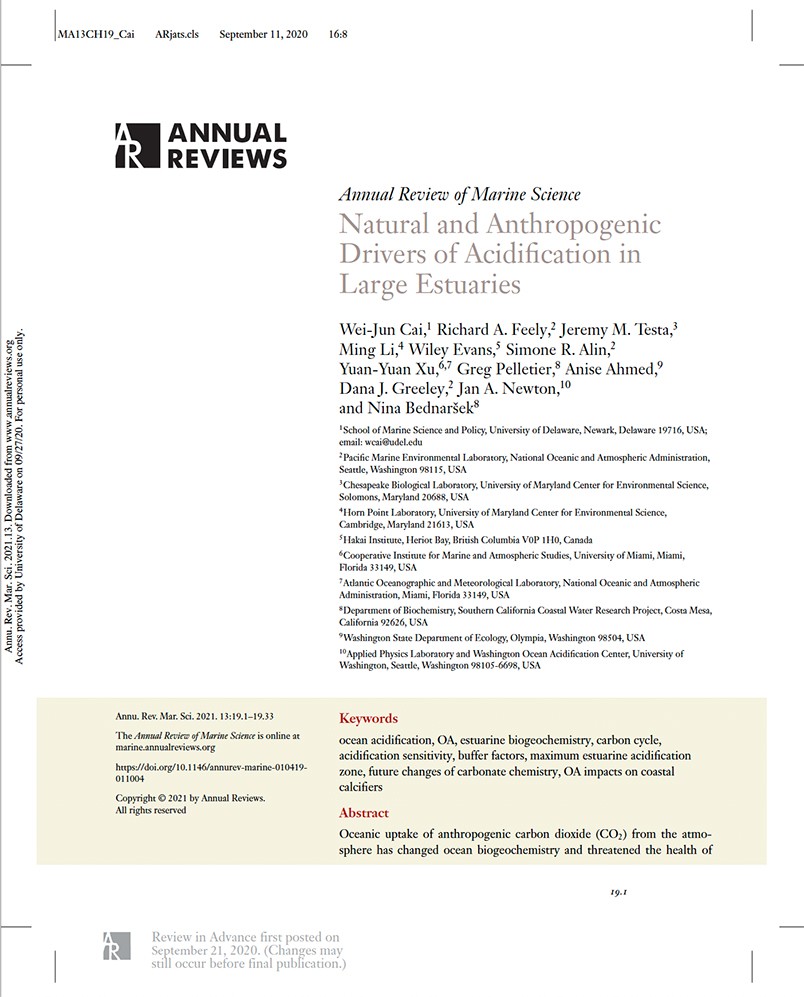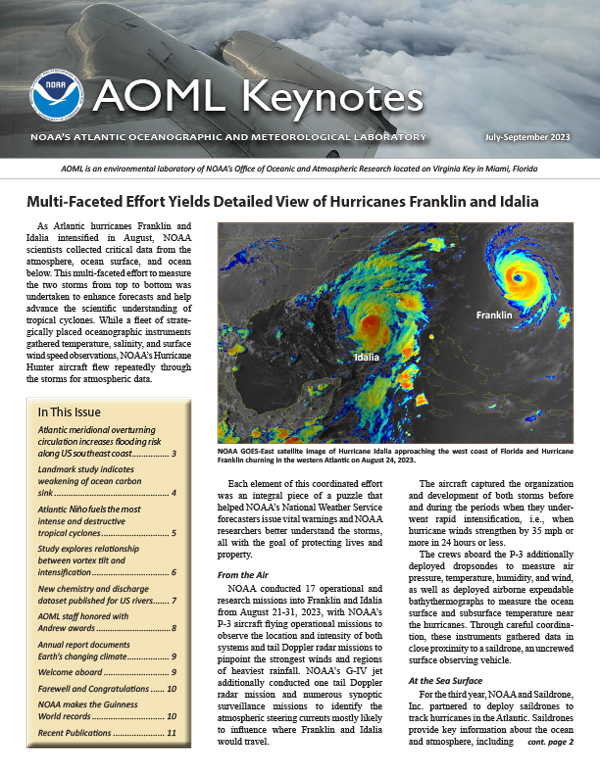OSSE Assessment of Underwater Glider Arrays to Improve Ocean Model Initialization for Tropical Cyclone Prediction
Halliwell Jr, G. R., Goni, G. J., Mehari, M. F., Kourafalou, V. H., Baringer, M., & Atlas, R. (2020). OSSE Assessment of Underwater Glider Arrays to Improve Ocean Model Initialization for Tropical Cyclone Prediction. Journal of Atmospheric and Oceanic Technology, 37(3), 467-487.
Abstract: Credible tropical cyclone (TC) intensity prediction by coupled models requires accurate forecasts of enthalpy flux from ocean to atmosphere, which in turn requires accurate forecasts of sea surface temperature cooling beneath storms. Initial ocean fields must accurately represent ocean mesoscale features and the associated thermal and density structure. Observing system simulation experiments (OSSEs) are performed to quantitatively assess the impact of assimilating profiles collected from multiple underwater gliders deployed over the western North Atlantic Ocean TC region, emphasizing advantages gained by profiling from moving versus stationary platforms. Assimilating ocean profiles collected repeatedly at fixed locations produces large root-mean-square error reduction only within ~50 km of each profiler for two primary reasons…
Read Full Paper .
